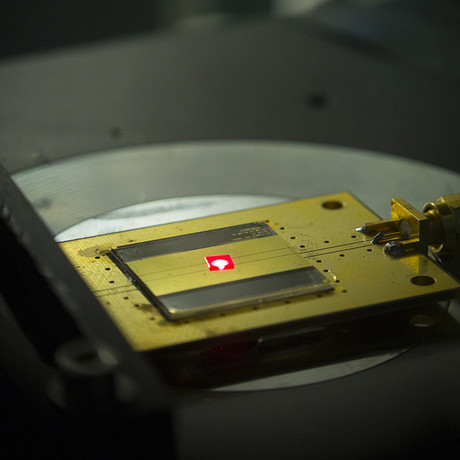World's smallest radio receiver

Researchers in the US have developed the world’s tiniest radio receiver, made from an assembly of atomic-scale flaws in pink diamonds.
The miniature radio has building blocks that are the size of just two atoms.
It can withstand extremely harsh environments and is biocompatible, which means it could potentially be employed in a spacecraft on Venus or a pacemaker in a human heart.
The research was led by Marko Loncar, the Tiantsai Lin Professor of Electrical Engineering at the Harvard John A. Paulson School of Engineering and Applied Sciences, along with his graduate student Linbo Shao. It has been published in Physical Review Applied.
The radio uses tiny imperfections in diamonds called nitrogen-vacancy (NV) centres. To make NV centres, researchers replace one carbon atom in a diamond crystal with a nitrogen atom and remove a neighbouring atom — producing a system that is essentially a nitrogen atom with a hole next to it.
NV centres can be used to emit single photons or detect very weak magnetic fields. They have photoluminescent properties, meaning they can convert information into light, making them powerful and promising systems for quantum computing, photonics and sensing.
In the Harvard device, electrons in diamond NV centres are powered, or pumped, by green light emitted from a laser. These electrons are sensitive to electromagnetic fields, including the waves used in FM radio, for example.
When the NV centre receives radio waves it converts them and emits the audio signal as red light. A common photodiode converts that light into a current, which is then converted to sound through a simple speaker or headphone.
An electromagnet creates a strong magnetic field around the diamond, which can be used to change the radio station, tuning the receiving frequency of the NV centres.
Shao and Loncar used billions of NV centres in order to boost the signal, but the radio works with a single NV centre, emitting one photon at a time, rather than a stream of light.
The radio is extremely resilient, thanks to the inherent strength of diamond. The team successfully played music at 350 degrees Celsius.
“Diamonds have these unique properties,” said Loncar. “This radio would be able to operate in space, in harsh environments and even the human body, as diamonds are biocompatible.”
2025–26 Thought Leaders: Tim Karamitos
Tim Karamitos from Ericsson discusses the connectivity requirements of emergency services and...
2025–26 Thought Leaders: Ruth Tovo
Comms Connect panellist Ruth Tovo, from the South Australian SES, discusses the technical...
ARCIA update: celebrating excellence in our industry
The ARCIA Annual Gala Dinner and Excellence Awards took place during the same week as Comms...



